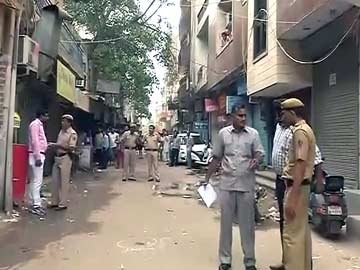By Prantick Majumder"Does
the Rajdhani Express go to Assam?" I thought I had heard something
wrong. When the question was repeated, I knew I heard it right. My blood
came to a boil. But my conscience got the better of me as I realised
that the person may genuinely not know much about Assam.
I said instead:
"No, the Rajdhani goes only till New Jalpaiguri. On
the Assam-Bengal border, we get off and take a bullock cart!"
So pleased was I with my own terrible joke that I almost rolled on the floor laughing!
I am from the northeast, from Assam, from Guwahati, but I am not Rudyard Kipling's Mowgli who was raised by wolves.
Now a migrant in Delhi, I came in 2008 after landing a job in a reputed media organisation.
I come from a respected and well-known family in Guwahati. My
grandfather was a lawyer. My father was a gold medal-winning professor
at a Guwahati college. My mother is from a family of businessmen which
once traded with Bhutan's king and small Hindu princely areas of
Bangladesh.
I was born and brought up in Guwahati, studied in a missionary school
with origins in Italy, and finally in a reputed 60-year-old local
college. I completed my Master's from a fledgeling but promising central
university in Tezpur, a town linked to Lord Krishna.
The question posed to me about Rajdhani came from a Delhiite educated in Mumbai.
Ignorance about the northeast is indeed widespread. Some get stumped
when I tell them I travel by air; do planes fly to remote, far-off
northeast?
A woman Assamese colleague from Dibrugarh was asked by a Delhiite if rhinoceros roam in her backyard!
Once a man from Nainital asked me if I could "arrange" some "exotic"
northeastern woman for him. Needless to say the man has never dared to
speak to me again.
My colleagues often pull my leg about how they would help Assam get
'independence' -- provided I hand over all the rhinos, all oil fields,
the mighty Brahmaputra, all the tea gardens plus all the timber! I reply
by saying that after getting freedom, I will be the charge d'affaires
of Assam in Delhi!
Jokes apart, my fellow northeasterners may hate me for what I am
going to say now. I am an Assamese. Although my surname sounds Bengali,
my original surname was "Majumder Baruah".
How the "Baruah" got dropped
is another story.
I have not faced any discrimination through the six years I have been
in Delhi. My colleagues give credit for that to my non-Mongoloid looks.
I have lived for five years in South Extension in south Delhi where
there is a literal flood of people from the northeast. I have seen a few
scuffles over the years but none involving a northeasterner.
In fact, my landlord, from Haryana, goes to great lengths to make me feel at home and has helped me on several occasions.
It was indeed a cultural shock when I first arrived in Delhi. I found
many people here were vegetarians, a fact difficult to digest for my
fish, meat-eating persona. Hence my roommate (also from Assam but a
Bengali) and I always choose a house whose owner is not a strict
vegetarian.
I have seen some northeasterners lie to the landlords, then flout the house rules by cooking even pork and beef.
I don't drink. Northeasterners unfortunately have a bad reputation in
Delhi. Some here think we are all alcohol guzzlers and sleep around.
Yes, there are bad apples but they are in a minority.
You need two hands to clap. I think both the northeast community and
the so-called Delhiites are to blame for the state of affairs in the
capital vis-a-vis people from the northeast.
Many north Indians may lack knowledge about the northeast, but how
many from the northeast can claim to know everything about the rest of
India?
Then there is music. While the Constitution allows freedom of
expression, can people (north Indians included) play loud music late
into the night?
Northeasterners should remember that they are migrants in Delhi and
are easily identifiable. While playing music is no crime, respect your
neighbours.
While people in Delhi or so-called "mainstream India" have little
exposure to the northeast, people from the "remote, far-flung" region
also need to make adjustments to local realities.
While northeasterners have been hit by crime in Delhi, thousands of people like me are earning their livelihood in peace.
I agree that there are times northeasterners are targeted. But don't
Punjabis and south Indians and Biharis also become victims of Delhi's
notorious abrasiveness?
People from other regions may find it difficult to make friends among
Delhiites. But instead of being cocooned within their own community,
they should mingle with other people and educate them about their
region.
 Mumbai: Mary Kom is an Indian boxer. Her life is outstanding example for the youth in general and for women specifically. The legendary boxer from North East Indian
state of Manipur took lot of struggle to reach her goal (of winning
medal for India). Born and brought up in a not so rich family, Mary Kom
faced lot of financial and psychological hindrances in her journey to
her goal.
Mumbai: Mary Kom is an Indian boxer. Her life is outstanding example for the youth in general and for women specifically. The legendary boxer from North East Indian
state of Manipur took lot of struggle to reach her goal (of winning
medal for India). Born and brought up in a not so rich family, Mary Kom
faced lot of financial and psychological hindrances in her journey to
her goal.















